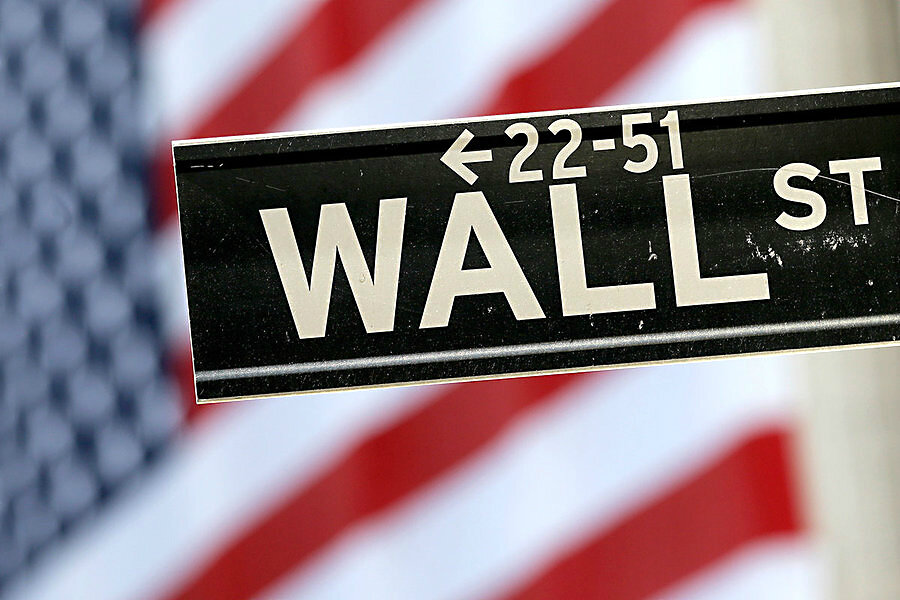Post-crisis banking rules: now altered but not undone
Loading...
| Washington
When President Trump signed recent legislation to lighten regulations on financial firms, supporters called it a long-overdue step to remove burdens on smaller banks. But critics see risks to the economy in the legislation, which rolled back portions of the 2010 Dodd-Frank Act.
A key point, perhaps lost in the shuffle of debate over the measure, is that core provisions of the Dodd-Frank Act remain in place, and many financial experts say the act has encouraged banks to become safer in the years since the Great Recession.
At the same time, between the change in law and a shifting tone from regulators, oversight of the industry appears to be growing looser as that crisis recedes in the rear-view mirror. In a "stress test" review released Thursday, the Federal Reserve used a light touch even on one bank that showed high losses during potential times of stress.
Why We Wrote This
Is bank regulation growing more pragmatic or just weaker? It's an important question as the economy's long expansion continues, but with the Federal Reserve raising interest rates.
Here's a Q&A briefing on banking oversight and the economy.
Q: What’s the Dodd-Frank Act again?
If you’ve forgotten, maybe that’s good news – in the sense that bank regulation often comes into the spotlight when the economy hits financial trouble. This law was the United States’ regulatory answer to the global financial crisis of 2008.
Pushed by President Barack Obama and shaped by Democrats Christopher Dodd (in the Senate) and Barney Frank (in the House), it ramped up federal oversight of financial institutions in the hope of spotting risky behavior before it fueled the kind of panic that occurred in the Great Recession when firms, including investment bank Lehman Brothers, collapsed.
Key provisions in the law are higher cushions of required capital for banks, new supervision of nonbank financial firms such as insurers, and more transparency for trading of “derivatives,” investments tied to the credit system.
The law also sought a path whereby a big banking firm could be allowed to fail (avoiding the “moral hazard” of a taxpayer bailout) without endangering the financial system. And it set up a new agency to champion consumer interests, the Consumer Financial Protection Bureau.
Q: What does the recent legislation aim to do?
The new law, passed by the Senate in March and by the House on May 22, seeks to ease what critics say was regulatory overkill. Mr. Trump made deregulation a major campaign theme and pledged to “do a number” on Dodd-Frank in particular.
The new measure doesn’t go as far as many Republicans had hoped. Although it leaves the core provisions of Dodd-Frank in place, it does make significant changes. Proponents say that by loosening rules affecting smaller lenders, credit will flow more freely and community banks will be able to compete better with industry giants. Citing that goal, a number of Democrats joined Republicans to pass the changes.
“It’ll be a while before you see the difference, but it should free up lending at small and midsize banks as well as credit unions that previously had been hemmed in by regulatory and compliance overhead,” says Greg McBride, who analyzes financial conditions at Bankrate.com.
For example, it should now be easier for some people with uneven income (such as a sole proprietor) to get a mortgage, Mr. McBride says.
Q: What are the measure’s critics saying?
A main criticism is that less-strict rules will, at least somewhat, undercut the goal of safety and stability in the financial system.
For instance, Dodd-Frank’s enhanced regulatory standards will now apply only to banks with $250 billion or more in assets, when the prior threshold was $50 billion. That, says Gregg Gelzinis of the liberal Center for American Progress, means that 25 of the 38 largest US banks will no longer have to maintain as much capital on hand as a cushion against hard times. They also won’t have to create “living wills” – plans for how to unwind themselves in a potential collapse. The affected banks include not just large regional banks like SunTrust and Comerica but also the US affiliates of global firms like UBS and BNP Paribas.
In addition, the law makes the “stress testing” of large banks more flexible. In those examinations, regulators seek to periodically assess whether a bank could weather severe financial market conditions.
Q: What’s the political message from this bill’s passage?
Banks and financial firms have been pushing for regulatory rollback, so this is a win for them as well as for Republicans. But in a sense it’s also a victory for the check-and-balance role that the minority party plays in lawmaking. That’s because Democratic votes were essential to the legislation passing in the Senate.
Bottom line: The bill found a middle ground for bipartisan support, but stopped far short of a more sweeping rollback that some GOP leaders had hoped for.
Q: What’s next for the economy?
A recent Reuters poll of more than 100 economists found roughly a 1-in-3 chance of a US recession in the next two years. The consensus was that the power of tax cuts will offset rising interest rates and trade barriers to prolong a growth streak that’s already long by historical standards.
Banks at the moment look healthy and profitable. But the Global Financial Stability Report from the International Monetary Fund report late last year pointed to a dilemma: As the Federal Reserve and some other central banks raise interest rates from ultralow levels, “too quick an adjustment could cause unwanted turbulence in financial markets,” but “continued easy monetary conditions ... could foster a further buildup of financial excesses.”
That’s a hint of how, ultimately, it matters not just what regulations are in place, but also what the mind-set of regulators is as they keep watch on the financial system.






